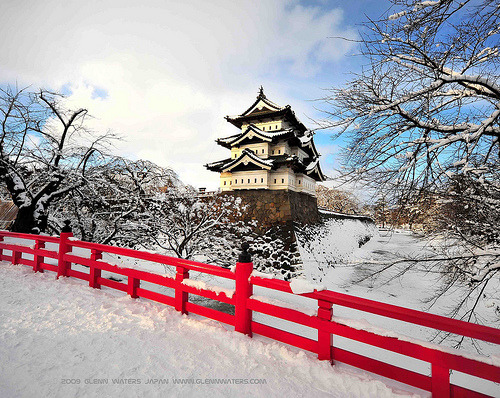Good morning = ohayo gozaimasu (おはよう ございます)
One can also say just "Ohayou(おはよう)". This is casual, and should not be used with one's boss.
Good afternoon, Hello = konnichiwa (こんにちは)
Good evening = konbanwa (こんばんは)
Goodnight = oyasumi nasai (おやすみなさい)
Unlike English, it is mostly used before going to bed.
Goodbye = sayonara (さようなら)
Sayounara(さようなら)" can be also used instead of "sayonara(さよなら)." People do not say "sayonara(さよなら)" when leaving their own home. "Ittekimasu(いってきます)" is normally used. The response to "Ittekimasu(いってきます)" is "Itterasshai(いってらっしゃい)".
See you later = dewa mata nochihodo (では また のちほど)
"Dewa mata(ではまた)" is also often used as "see you later", similar to the English expression
How are you? = o genki desu ka (お げんき ですか)
Fine, and you? = genki desu. anata wa (げんきです、あなたは)
Pleased to meet you = hajimemashte(はじめまして)
My name is _____ = watashi wa _____ desu(わはしは __ です)
Excuse me = sumimasen (すみません)
I'm sorry = gomen nasai(ごめんなさい)
(eg I trod on your foot)
Thank you
domo (ども)
arigato(ありがとう)
arigato gozaimasu(ありがとう ございます)
domo arigato gozaimasu(ども ありがとう ございます)
(in iincreasing order of formality)
You're welcome = do itashimashte(どう いたしまして)
Land of The Rising Sun
Nippon-koku or Nihon-koku, literally, the State of Japan) is an island nation in East Asia.[10] Located in the Pacific Ocean, it lies to the east of the Sea of Japan, China, North Korea, South Korea and Russia, stretching from the Sea of Okhotsk in the north to the East China Sea and Taiwan in the south. The characters that make up Japan's name mean "sun-origin", which is why Japan is sometimes referred to as the "Land of the Rising Sun"..

Historical Town : Kyoto
Kyoto is located in a valley, part of the Yamashiro (or Kyoto) Basin, in the eastern part of the mountainous region known as the Tamba highlands. The Yamashiro Basin is surrounded on three sides by mountains known as Higashiyama, Kitayama and Nishiyama, with a height just above 1,000 metres (3,281 ft) above sea level. This interior positioning results in hot summers and cold winters. There are three rivers in the basin, the Ujigawa to the south, the Katsuragawa to the west, and the Kamogawa to the east.

Learning from Basic
Japanese (日本語 Nihongo, [nihoŋɡo]) is a language spoken by over 130 million people in Japan and in Japanese immigrant communities. It is a member of the Japonic (or Japanese-Ryukyuan) language family, which has a number of proposed relationships with other languages, none of which has gained wide acceptance among historical linguists.

Learn by Conversation
Japanese word order is classified as subject–object–verb. Unlike many Indo-European languages, the only strict rule of word order is that the verb must be placed at the end of a sentence; other elements in the sentence may be in various orders for emphasis, or possibly omitted. This is because the Japanese sentence elements are marked with particles that identify their grammatical functions.

Phrase for Intermediate Grammar
Japanese nouns have no grammatical number, gender or article aspect. The noun hon (本) may refer to a single book or several books; hito (人) can mean "person" or "people"; and ki (木) can be "tree" or "trees". Where number is important, it can be indicated by providing a quantity (often with a counter word) or (rarely) by adding a suffix. Words for people are usually understood as singular.




